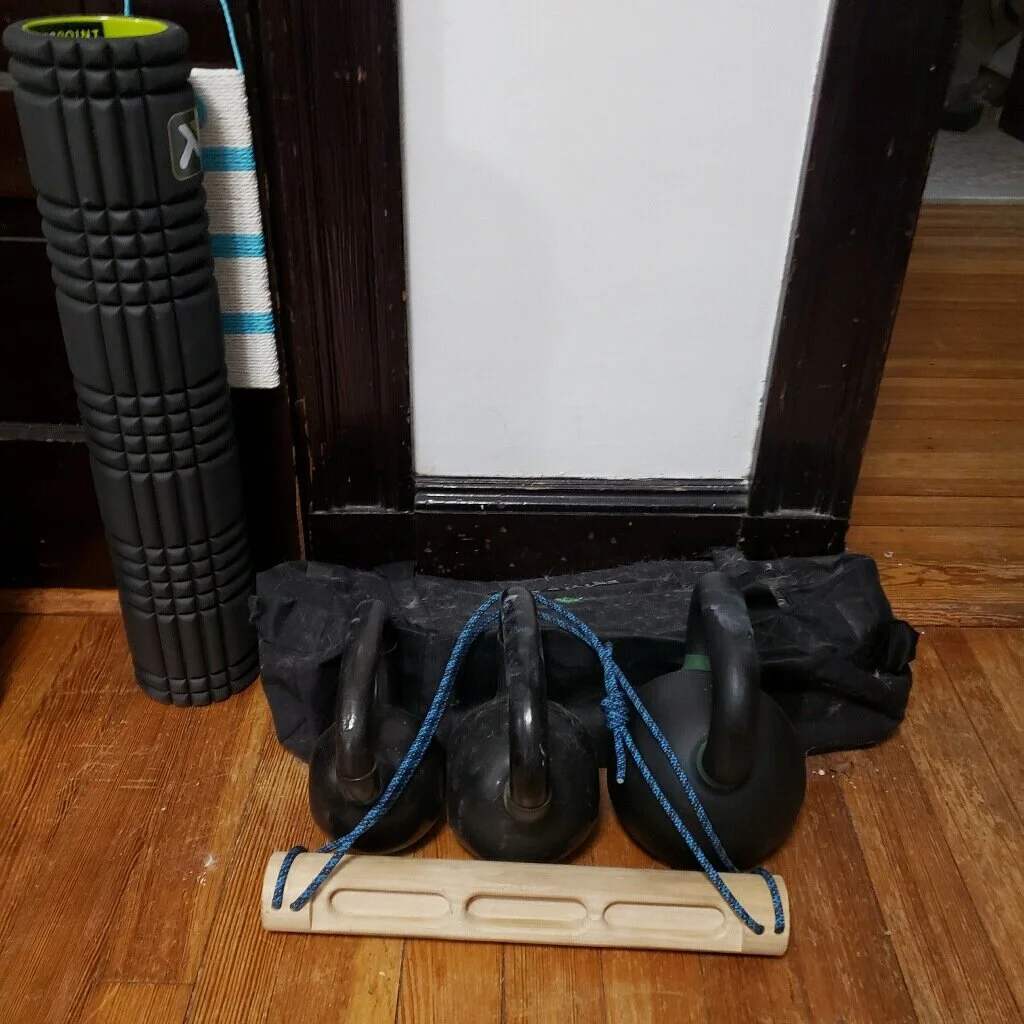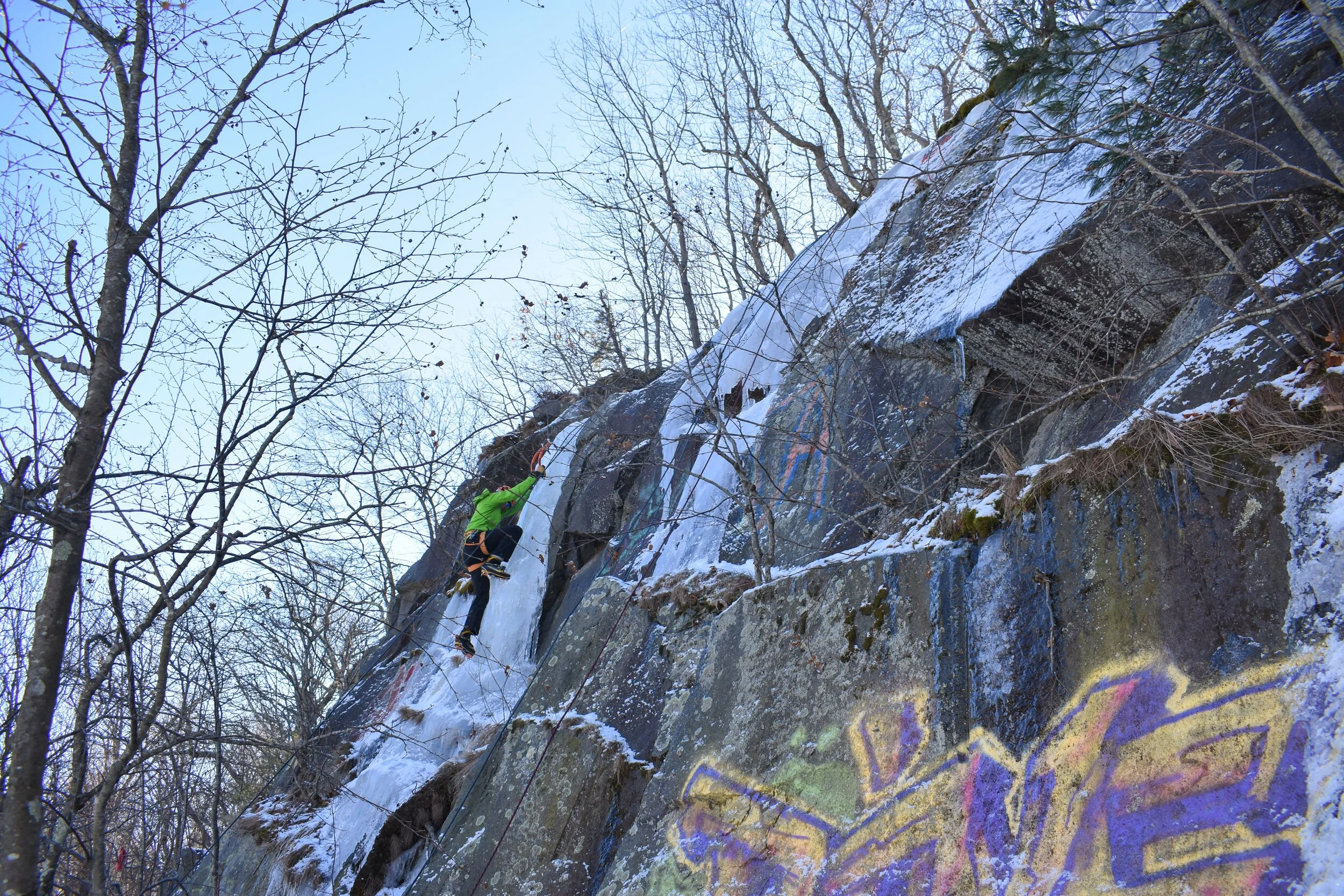Quincy Quarry Dry Tool Cracks
Quincy Quarry has three excellent dry tool cracks. Early season favorites of mine, they are worth checking on any day you want to swing the tools, but the ice isn’t “in.”
1. Finger Flux. Located on the north wall of Swingles Quarry, Finger Flux is a 20-ish foot tall vertical crack that’s great for dry tooling. Small ledges and smears on both sides of the crack offer needed foot placements, while tools slot nicely into the crack; at least until the wider-than-you’d-like topout. Be forewarned—the climbing is so stiff and pumpy that it’s not for the faint of heart (or newer dry toolers). That said, it’s the best dry tool cracks in Greater Boston that I’m aware of.
Finger Flux is easily set up as a top rope from trees above using a long static line. It is also leadable—sewing up nicely with small gear (cams and nuts) for the bottom and one or two bigger cams (including a 3) for the top.
2. Layback Corner. A 35-ish foot route on the left end of M Wall, Layback Corner is a fantastic dry tool training route. It begins with a tricky start on mediocre feet that’s easier for taller climbers, who can reach their axes into the featured crack about eight feet up. After passing the 5.8-ish crux at the bottom, continue up the vertical crack, fighting the urge to veer left until close to the top. The climbing mellows quickly after the initial difficulties.
Layback Corner has one of the easiest anchor setups at Quincy Quarries. Just clip the two glue-in bolts at the top, making sure to extend your top rope anchor below the double ledge below. (Here are some tips for building a top rope anchor.)
3. M Crack. Located a few feet away from Layback Corner, is another good training route. The first half of M Crack is solid Quincy Quarry 5.8 before mellowing on easier terrain as the route veers right towards the anchor. The crux is negotiating your tools high enough in the finger crack to get your feet up onto the ledge. Strenuous is an apt description.
The anchor for M Crack uses a bolt and some old quarrying equipment. It is easily set up. A more challenging direct finish is doable if you move the anchor about 8 feet to climbers’ left, directly above the crack.







